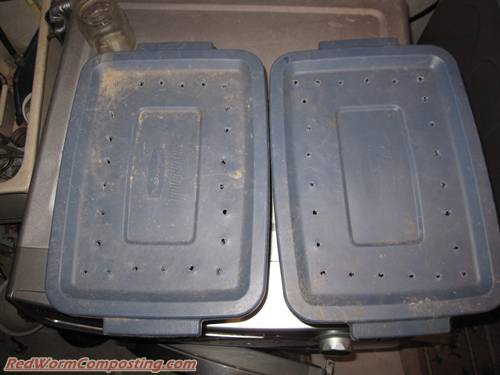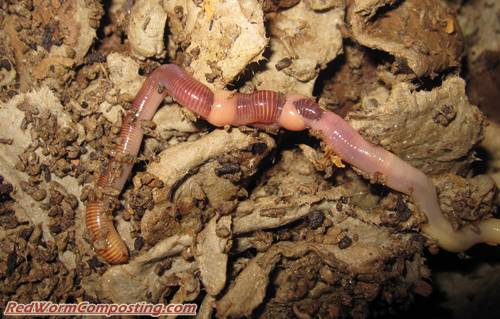May 17, 2012
Euros vs Reds-5-17-12
It’s been more than two months since my last “Euros vs Reds Head to Head Challenge” post (see “Euros vs Reds-3-8-12“), so I figured I’d better check on things. lol
Right off the bat I’m going to say that this is definitely the LAST time I am counting cocoons (and likely even juvenile worms)! Man oh man – if you’re looking for a way to burn through hours it’s great, but for the rest of us…
😯
Griping aside – I must say that the results were pretty wild (objective scientific lingo, I can assure you)!
Here are the quick stats before I elaborate a bit:
~ Red Worms ~
Cocoons – 78
Empty Cocoons – 18
Juveniles – 10
Adults – 8
~ European Nightcrawlers ~
Cocoons – 104
Empty Cocoons – 59
Juveniles – 71
Adults – 8
If the difference between the two isn’t surprising enough as-is, I should also mention the fact that I was NOT even able to go through the Euro bin as thoroughly as I did for the Red Worms – it was simply taking too long. I don’t think the numbers are TOO far off, but I wouldn’t be surprised if there were 20 or more additional cocoons hidden away. As you may recall from my last update (linked above), in spite of the fact that Euro cocoons are bigger than Red Worm cocoons, they tend to be a lot more challenging to find in among the castings (which are also a fair bit bigger) and fragmented bedding material.
Bottom-line, the Euros seem to be kicking butt in this comparison experiment! Of course, we can’t really make any generalizations based on these results. For one thing, I did give the Euros a pretty decent head-start (especially when considered in hindsight!). I added 6 adult Euros and 2 cocoons, while the Red Worm bin only had 6 juveniles at the beginning. In light of this I guess it’s not too surprising there are so many cocoons and juveniles in the Euro bin. The picture below says it all!
😆
I am also wondering if the lack of “real” food has had an impact (I have fed these bins very little over the past few months). Perhaps the Euros are better at deriving nutrition from bedding materials than Reds. I definitely want to see if adding food on more of a regular basis makes a difference.
I still have a sneaking suspicion that the Reds are going to catch up, but only time will tell!
As I alluded to above, from here on out I will only be counting adults for the sake of saving time (and my sanity). This obviously isn’t the greatest way to compare them right now – so I AM glad I did one last cocoon and juvenile count – but as the populations grow in size it should become more and more valuable as an indication of overall “success”. I have little doubt that there will be more adult Euros (than Reds) the next time I check on the bins, but beyond that it’s hard to say for sure. Should be interesting.
Will be sure to keep everyone posted!
8)
Previous Posts in Series
Euros vs Reds-3-8-12
Euros vs Reds-2-21-12
Euros vs Reds-2-09-12
Euros Vs Reds – Take Two…and…ACTION!
The Euros vs Reds Head to Head Challenge


